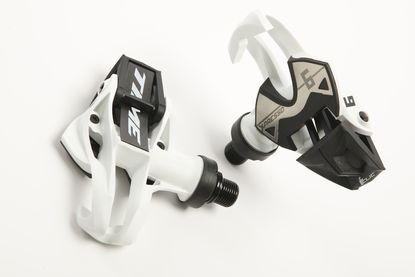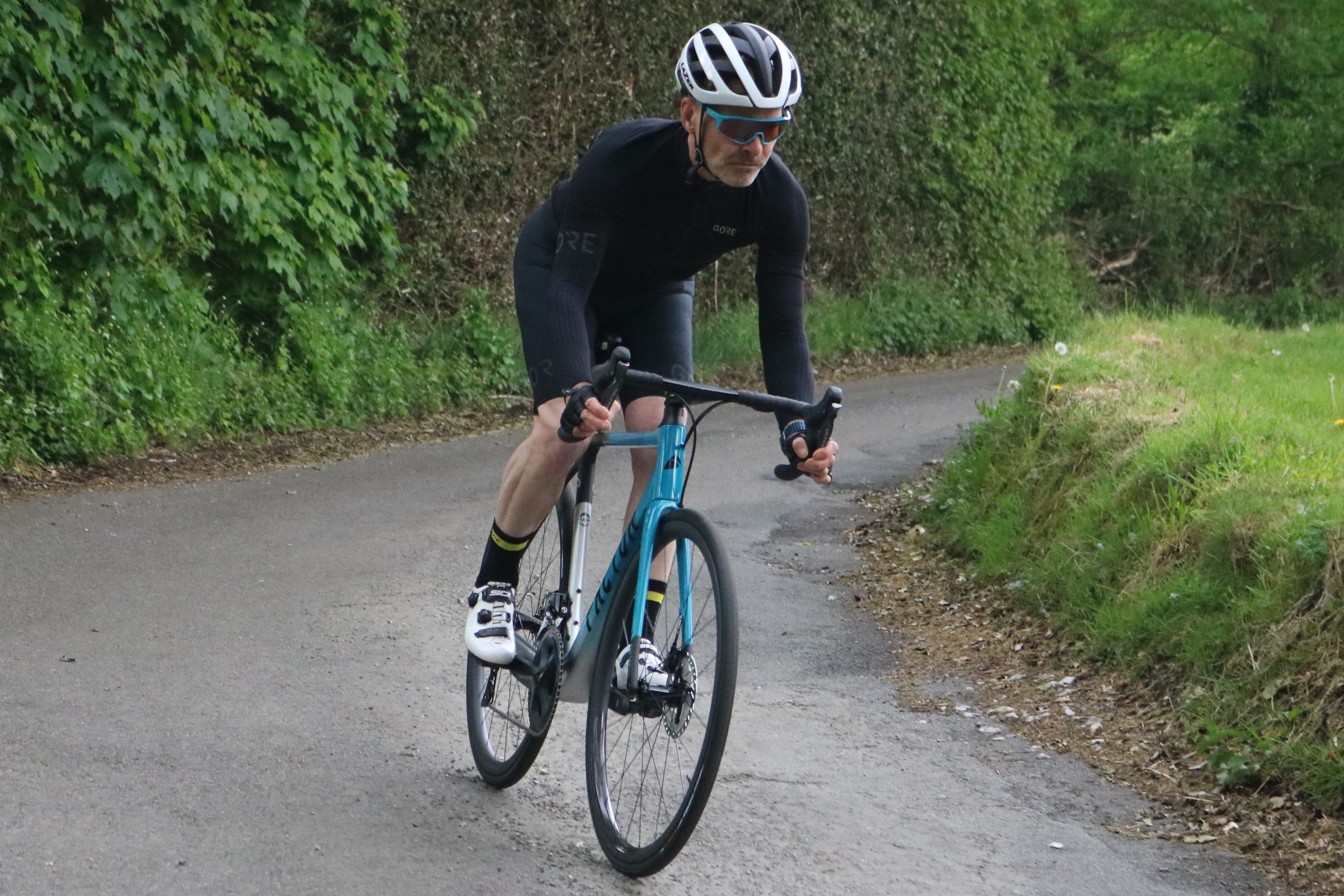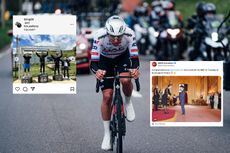Time Xpresso 6 pedals review
You don't see a lot of TIme road pedals out there these days, but they bear consideration if you're looking for an alternative to the larger players

A nicely designed pedal with easy engagement but lacking the adjustability of other makes’ clipless road pedals.
-
+
Open-position spring for easy engagement
-
+
Light
-
+
Solid hold on cleat
-
+
In-built lateral and angular float
- +
-
-
Engagement not always positive
-
-
No option to tailor float and engagement tension to suit individual tastes
-
-
Sharp edges
- -
You can trust Cycling Weekly.

Time’s pedal system has become the also-ran of the road bike pedal market, which is dominated by Shimano, Look and Speedplay. However, its Xpresso pedals are still going strong and the range includes the ultra-light 133g-a-pair Xpresso 15. At £400 these are a bit extravagant, but the Xpresso 6 is more reasonably priced and weighs just 80g a pair more.
>>> Which pedal system is best for you?
For that price, the Xpresso 6 offers a long composite plastic body with a large engagement surface and a carbon blade spring to handle clipping in. Time says that its pedals also have a low stack height. As well as angular float, they also provide 2.5mm of side-to-side float to suit different pedalling styles.
>>> The best cycling clipless pedals
The iClic engagement system is pretty easy to get the hang of. The carbon blade spring rests in the open position, so unlike other road clipless pedal systems you don’t have to push against the spring’s tension to engage the cleat. Once the cleat is aligned, the blade spring just flips to mesh with the rear of the cleat – usually but not always with an audible click.

The rear engagement surface is shorter than Shimano’s and I wasn’t always certain that I’d engaged correctly. You have to get used to presenting the cleat at the correct angle for positive engagement.
But once properly clicked in the pedals give a firm, confident hold. A previous reviewer had cut his leg on the sharp edges of the pedal’s front engagement surface, but I never found this a problem.
Although other pedal makers offer a carbon body rather than composite from around the price of the Xpresso 6s, I didn’t find Time’s plastic felt any less solid. There’s a wide metal plate on the top of the pedal on which the centre of the cleat rests, giving good pedal-to-cleat contact. Disengagement with an outward or inward twist of the foot is drama-free too.
Watch: How to fit and remove pedals
The cleat itself is longer and narrower than a Shimano SPD-SL cleat. The extra length is due to the side supports being set further back, which protects the engagement surface better. But it does mean that getting some overshoes over the cleat is a bit more difficult, as their apertures are usually designed around Shimano-sized cleats. This doesn’t get in the way of pedal engagement though.
Overall I’ve been impressed with Time’s road pedals. There’s quite a lot of flexibility built into the design, so you’re likely to find them comfortable, although not the possibility to alter float and engagement tension which Shimano and Look offer.

Thank you for reading 20 articles this month* Join now for unlimited access
Enjoy your first month for just £1 / $1 / €1
*Read 5 free articles per month without a subscription

Join now for unlimited access
Try first month for just £1 / $1 / €1
Get The Leadout Newsletter
The latest race content, interviews, features, reviews and expert buying guides, direct to your inbox!
Paul started writing for Cycling Weekly in 2015, covering cycling tech, new bikes and product testing. Since then, he’s reviewed hundreds of bikes and thousands of other pieces of cycling equipment for the magazine and the Cycling Weekly website.
He’s been cycling for a lot longer than that though and his travels by bike have taken him all around Europe and to California. He’s been riding gravel since before gravel bikes existed too, riding a cyclocross bike through the Chilterns and along the South Downs.
-
 Tweets of the week: Pogačar can be beaten, Pidcock meets the royals, and Remco's an Arsenal fan
Tweets of the week: Pogačar can be beaten, Pidcock meets the royals, and Remco's an Arsenal fanSadly for Tadej Pogačar, serial winning doesn't seem to apply to go karting
By Tom Davidson Published
-
 Remco Evenepoel goes on first outdoor ride since horror crash, hints at Tour de France on Strava
Remco Evenepoel goes on first outdoor ride since horror crash, hints at Tour de France on Strava'On my way back' says the Belgian, as he builds back up to Tour de France form with almost-100km ride
By James Shrubsall Published
-
 Four weeks after breaking arm, Lizzie Deignan set to start La Vuelta Femenina
Four weeks after breaking arm, Lizzie Deignan set to start La Vuelta FemeninaBritish rider to line up at eight-stage race on Sunday, less than a month on from crash at Tour of Flanders
By Adam Becket Published